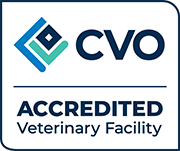Illustrated Articles
-
Bilberry is an over the counter supplement given by mouth, and is used off label to treat conditions of the eyes, heart and blood vessels, diabetes, and tumors. Give as directed by your veterinarian. There are no known side effects, but information is limited. There are no known contraindications. Certain medications should be used with caution in combination with bilberry. If a negative reaction occurs, please call your veterinary office.
-
Bile acids are compounds that are made in the liver and stored in the gall bladder and help with digestion of foods. The bile acid test is a very useful test that helps to determine if the liver is working properly. An abnormal bile acid test result indicates there is a problem in the liver, but it does not provide information about the cause, severity, or reversibility of the problem. Further testing is required to investigate the problem.
-
Bimatoprost ophthalmic is a topical eye medication prescribed off label to treat high fluid pressure and primary glaucoma in the eyes of dogs. It comes as a liquid eye drop to be administered on the surface of the eye. Bimatoprost ophthalmic is a prostaglandin. Pregnant women may wish to avoid the use of this drug in their households.
-
Biological response modifiers (BRMs) are naturally occurring substances that are used to treat diseases, infections, or chronic itchiness or pain, by affecting the immune system and how it works. They are mostly used to treat some cancers, immune-mediated diseases, and infections. Most BRMs are administered in the hospital under veterinary supervision. Side effects vary but may include fever, stomach upset, tiredness, or allergic reactions.
-
Depending on the size and breed of the dog, heats (estrus) can begin as early as four months old and can occur as frequently as every four months. Spaying a dog either through ovariohysterectomy or ovariectomy is the most effective way to prevent pregnancy. Spaying also negates false pregnancies and pyometra and reduces the risk of mammary cancer. Drugs that regulate the heat cycle are not approved for use in the US or Canada.
-
Bismuth compounds are given by mouth and are used on and off label to treat diarrhea and upset stomach. Give as directed by your veterinarian. The most common side effects include discolored stools and constipation. Do not use in pets that are allergic to it or other NSAIDs, or in pets that have a stomach or intestinal ulcer. If a negative reaction occurs, please call your veterinary office.
-
Bites wounds are one of the most common reasons dogs are seen for emergency appointments with their veterinarians. The dog's teeth and jaws are very powerful and the wounds they inflict can crush or tear muscles and skin, penetrate through the chest wall and cause lung collapse, or cause serious or fatal damage to intestinal organs. All bite wounds are considered to be contaminated and/or infected. Left untreated, the bacteria in an infected bite wound will cause a localized abscess or more generalized cellulitis that spreads through the surrounding area. All bite wounds should be treated by a veterinarian as soon as possible. Treatment will depend on the extent of the injuries, your dog's general health, and the location of the wounds.
-
Green and black tea is given by mouth, over the counter, and is used off label to treat cancers and inflammation. Give as directed by your veterinarian. The most common side effects of caffeinated green/black tea include nervousness, sleeplessness, increased heart rate, and anxiety. Based on human studies, green and black tea should be used cautiously in pets that have kidney disease, stomach or intestinal ulcers, heart disease, insomnia, glaucoma, or high blood pressure. If a negative reaction occurs, please call your veterinary office.
-
Bladder stones are rock-like formations of minerals that develop in the urinary bladder. The most common signs in dogs are bloody urine and straining to urinate. Bladder stones can develop within a few weeks, or they may take months to form. Most are visible on X-rays or an ultrasonic bladder examination. There are three main treatment options for bladder stones: surgical removal, non-surgical removal by urohydropropulsion, or dietary dissolution. Prevention is possible in some cases, depending on the chemical composition of the stones.
-
Dogs appear to be more susceptible to blastomycosis than many other species. The blastomycosis fungus targets the respiratory tract, although it may spread throughout the entire body. Cytology and/or histopathology are required to diagnose blastomycosis conclusively.


